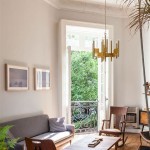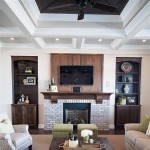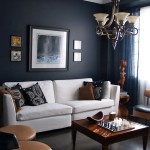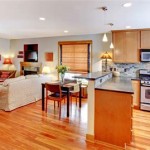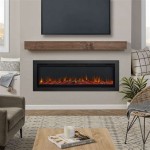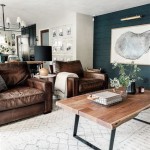Large Living Room Furniture Arrangement: Creating a Functional and Stylish Space
A large living room presents a wonderful opportunity to create a comfortable and inviting space where you can relax, entertain guests, and enjoy your home. However, achieving a cohesive and functional arrangement with ample furniture can be a challenge. This article provides practical tips and considerations for arranging furniture in a large living room, emphasizing the importance of balance, flow, and functionality.
Establish a Focal Point
A focal point serves as the visual anchor of the room, drawing attention and providing a sense of direction. In a large living room, this could be a fireplace, a large window with captivating views, a statement art piece, or even a well-designed entertainment center. The placement of furniture should naturally lead the eye towards the focal point, creating a flow and balance within the space. For example, a sofa positioned facing the fireplace or a coffee table strategically placed in front of a large window can highlight these focal points.
Define Zones for Different Activities
Large living rooms can be divided into distinct zones for various activities, such as conversation, relaxation, and entertainment. This zoning helps to create a sense of order and allows for different activities to occur simultaneously without feeling crowded. Consider using furniture placement, rugs, and lighting to create visual barriers between zones. For instance, a conversation area could be defined by a sofa, armchairs, and a coffee table placed close together, while a reading nook might feature a comfortable armchair positioned by a floor lamp.
Choose the Right Furniture
Selecting furniture that is appropriate for the size and scale of the room is crucial. Oversized furniture can make a large room feel cramped, while smaller pieces can get lost in the space. When selecting furniture, consider the overall dimensions of the room and the amount of space needed for comfortable movement. It's also important to choose furniture that complements the style and ambiance of the room. For example, a modern living room might feature sleek, minimalist furniture, while a traditional living room might benefit from more ornate and detailed pieces.
Balance and Symmetry
Achieving balance in a large living room is essential for creating a visually appealing and harmonious atmosphere. Consider using symmetrical arrangements, where similar pieces are placed on opposite sides of the room. This approach creates a sense of order and stability. However, complete symmetry can sometimes feel too formal. Introducing asymmetry by placing a smaller armchair next to a larger sofa or by adding a unique accent piece can add interest and visual appeal.
Traffic Flow
Ensuring that there is enough open space for comfortable movement is crucial in a large living room. Consider the natural flow of traffic through the room and arrange furniture accordingly. Avoid placing large pieces in the middle of walkways or blocking access to entryways and exits. Ensure ample space between furniture pieces to allow for easy movement and to prevent tripping hazards.
Lighting
Lighting plays a critical role in setting the mood and creating a welcoming environment in a large living room. A combination of ambient, task, and accent lighting can create a balanced and functional lighting scheme. Ambient lighting, such as overhead fixtures or floor lamps, provides general illumination throughout the room. Task lighting, such as desk lamps or sconces, provides focused light for reading or working. Accent lighting, such as spotlights or lamps directed at artwork or architectural features, can highlight specific areas and add visual interest.
Rugs
Rugs can be utilized to define zones, add warmth, and anchor furniture arrangements in a large living room. A large rug can serve as a visual anchor for a seating group, unifying the arrangement and creating a sense of cohesion. Smaller rugs can be used to define zones, such as a reading nook or entertainment area. When selecting rugs, consider the size and shape of the room, as well as the desired style and color scheme.
Decorative Accents
Decorative accents, such as throw pillows, blankets, artwork, and plants, add personality and interest to a large living room. These accents should complement the overall style of the room, adding visual interest and enhancing the ambiance. For instance, a collection of framed photographs can add a personal touch, while plants can bring life and color to the space. Utilize a variety of textures and colors to create visual appeal and depth.
Arranging furniture in a large living room requires careful planning and consideration. By establishing a focal point, defining zones, choosing the right furniture, balancing symmetry, ensuring traffic flow, utilizing lighting, incorporating rugs, and adding decorative accents, homeowners can create a functional and stylish space that reflects their individual taste and needs. Remember, the key to a successful arrangement is to create a balance between functionality, aesthetics, and personal preferences.

20 Stunning Great Room Ideas To Make The Most Of Your Space

Lay Out Your Living Room Floor Plan Ideas For Rooms Small To Large

10 Tips For Styling Large Living Rooms Other Awkward Spaces The Inspired Room

13 Large Living Room Layout Ideas Livingroom Long

5 Furniture Layout Ideas For A Large Living Room With Floor Plans The Savvy Heart Interior Design Décor And Diy

5 Tips And Tricks For Arranging Your Living Room Furniture Khf Blog

How To Arrange Furniture In A Large Living Room

10 Tips For Styling Large Living Rooms Other Awkward Spaces The Inspired Room
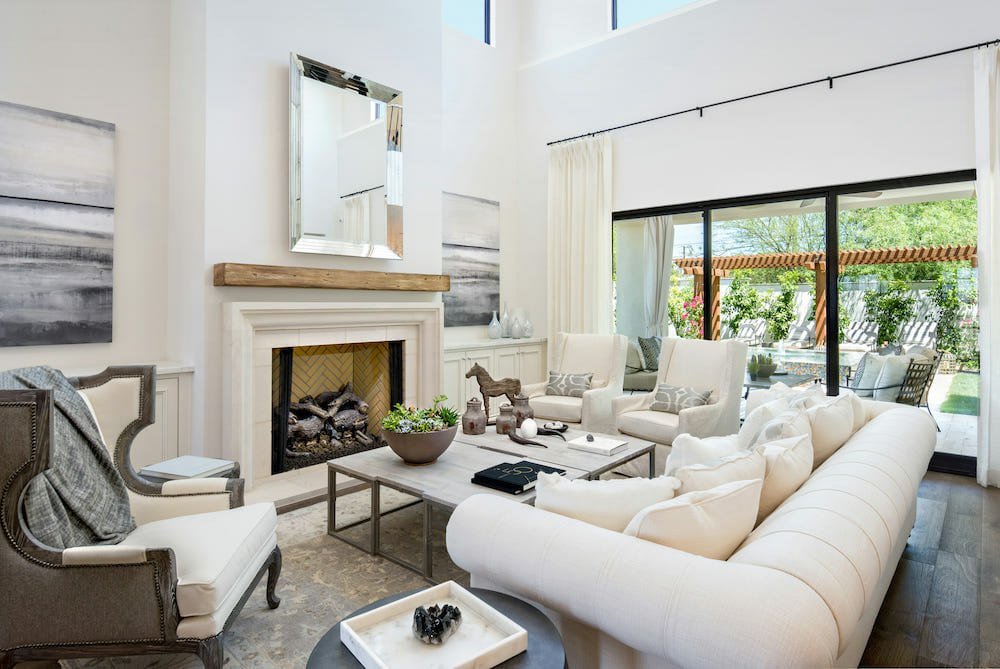
8 Designer Approved Living Room Layouts With A Fireplace Decorilla Online Interior Design

How To Arrange Furniture In A Long Living Room Setting For Four Interiors


